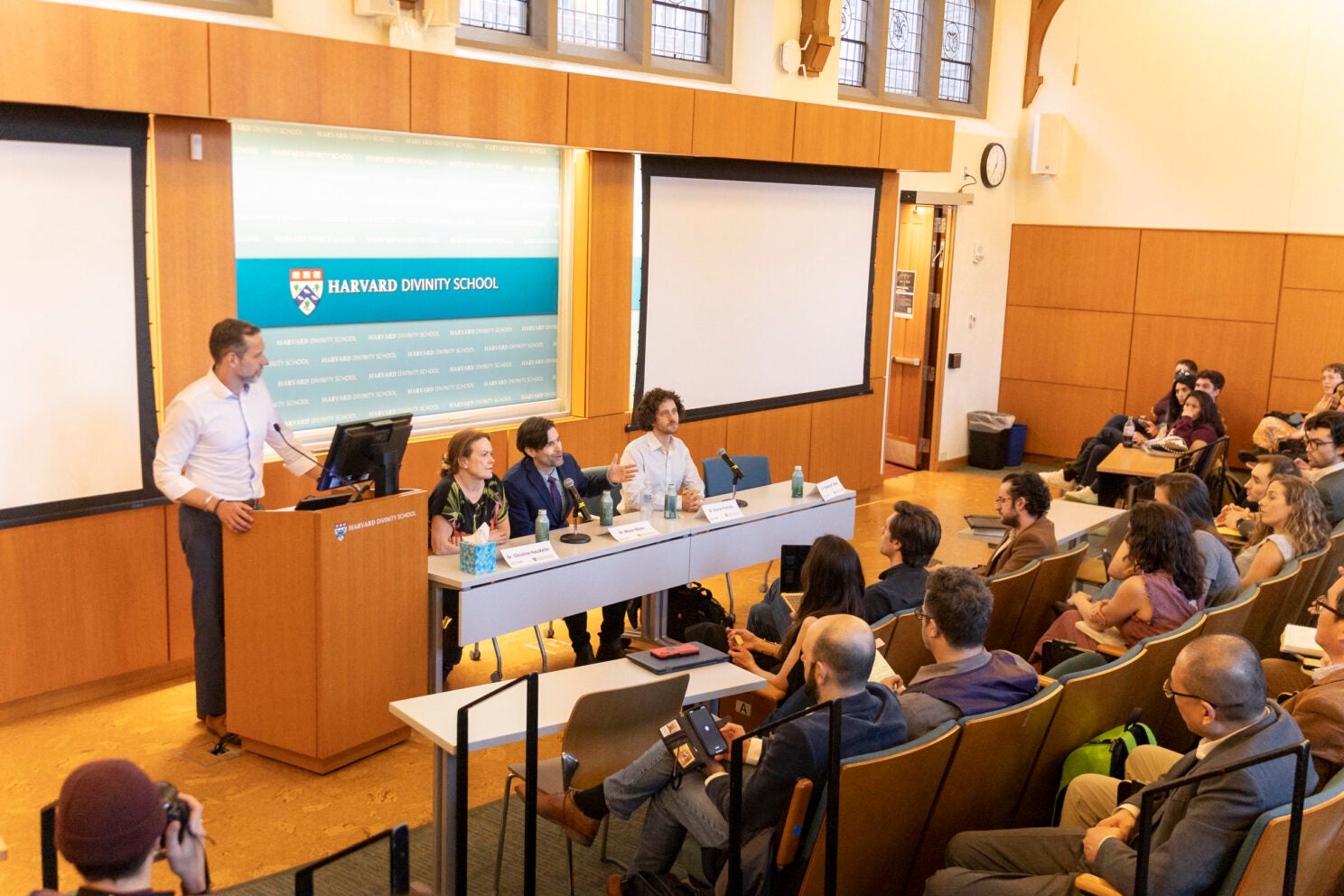Molly Przeworski.
Niles Singer/Harvard Staff Photographer
Health
Cancer risk, wine preference, and your genes
Biologist separates reality of science from the claims of profiling firms
Molly Przeworski launched into a lecture on genomic trait prediction with disappointing news: Using your genes to read the future is a murky practice.
The Columbia University systems biologist, who visited Harvard last week as featured speaker in the annual John M. Prather Lecture Series, explained how current approaches to genomic trait prediction in humans are imperfect. In a sample of 150,000 people, she said, more than 600 million positions in the genome differ among individuals. Over the past decade, it has become routine to survey such variation in large samples and try to associate variation in traits, such as height, to these genetic differences. Companies now aim to use DNA profiling to make personal predictions — height, cancer risk, educational attainment, which wine would best suit their palate, and even the right romantic partner.
“There are areas, notably for medical prognosis, where genomic trait prediction may turn out to be useful,” said Przeworski, whose lab studies how evolution, natural selection, recombination, and mutation operate in humans and animals. “But by and large, genomic trait prediction is much less informative than these ads and headlines would suggest.”
“But by and large, genomic trait prediction is much less informative than these ads and headlines would suggest.”
Molly Przeworski
At the moment, she said, the most useful application is not for humans, but rather for studying other species’ ecological responses to climate change. Her team has used genomic trait prediction among coral species in the Great Barrier Reef to shed light on which are most susceptible to coral bleaching.
In human genetics, the typical approach for associating some trait of interest (height, cancer risk) to specific genes is called a genome-wide association study. The test relates trait variations to genotypes (base pairs AA, AG, etc.) in certain positions on the genome, and fits them to a line.
However, many traits are associated with a large number of genetic variants. For example, one study Przeworski cited found 12,000 unique positions on a genome in which changing one base pair letter would have a small effect on one’s height. What’s more, environmental factors, such as nutrition, also affect height.
“I think a lot of us have this implicit model of what genomic trait prediction should mean — that we understand something about how that genetic variant affects the protein, affects the cellular phenotype, affects development, and therefore affects height,” she said. “In practice, for almost all complex traits, we are very, very far from that. All we really have is this massive correlational study.”
So if genomic prediction is murky, why bother? Przeworski admitted to asking herself the same question years ago, and investigating contexts in which confounding genetic clues wouldn’t matter as much as simply making a helpful, reliable prediction. “It occurred to me we could make predictions about ecologically important traits in the response to climate change,” she said.
She spent part of her talk describing how her lab followed up, partnering with Australian scientists who study how ocean warming affects coral reefs. Due to temperature-related disruptions in the symbiotic relationship between certain coral species and the algae they farm, some colonies lose their pigment and become “bleached,” which stunts growth and leads to colony death. Przeworski’s team has used their expertise in genomic trait prediction to build models that determine which corals are most vulnerable to bleaching.
“As it becomes more straightforward to collect genomic information, I think its greatest promise may be in applications outside humans,” she said.
The lecture was co-sponsored by the Department of Organismic and Evolutionary Biology, the Harvard Museum of Natural History, and the Harvard Museums of Science and Culture.














